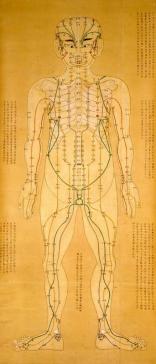The focus of this project is on how medical knowledge was produced through practice. In particular, how medical imagination grew locally and changed through time. Rather than concentrating on the efficacy of Chinese medicine as a medical treatment, or the verity of historical sources, this project examines the knowledge production process of observation and illustration: how offering useful information for targeted readers transformed multi-dimensional objects into two-dimensional ones. The “human body” as created or imagined by practitioners of Chinese medicine, although alien to us today, was established through both medical theories and practices and intended for transmission and preservation. That is to say, the imagined “human body” had a practical use at the time. This project also looks at further practical and material issues such as how human bodily waste was used as medicine, how it was collected and preserved, and what artifacts were created in the process. Medical imagery was produced by someone who, intentionally or not, implemented the process of imagining. Looking at the cognitive understanding of image-imagine-imagination, helps us understand medical knowledge and how this knowledge was put into practice.

Acupuncture scroll from the Paul Unschuld Collection. 19. C. or earlier? Japan, water color on paper, 200 x 79 cm Ident.Nr. I D 47765 a Ethnologisches Museum | Ost- und Nordasien © photo: Ethnologisches Museum der Staatlichen Museen zu Berlin - Preußischer Kulturbesitz photographer: Waltraut Schneider-Schütz
Project
(2020-2023)
